Creative Studio Photography with Scale Models
A course by Felix Hernandez Dreamphography , Photographer and Creative Director
Joined June 2015

Create realistic scenes with toys and the light painting technique
Ever wanted to make jaw-droppingly realistic scenes for your photos? Félix Hernández–photographer, model maker, and digital artist specialized in toy photography–teaches you the techniques and secrets to take pictures with scale models and trick the eye to make them look like part of a real scene.
In this online course, discover Felix's entire creative process, which includes choosing the model to photograph, preparing the set, designing the lighting, performing effects in the studio, digital post-production, and color grading in Photoshop.
What will you learn in this online course?
24 lessons & 11 downloads
- 100% positive reviews (514)
- 7,380 students
- 24 lessons (5h 5m)
- 11 additional resources (6 files)
- Online and at your own pace
- Available on the app
- Audio: Spanish, English, French, Italian, Portuguese, Turkish
- Spanish · English · Portuguese · German · French · Italian · Polish · Dutch · Turkish
- Level: Beginner
- Unlimited access forever
What is this course's project?
Create a realistic image using scale models, items that can mostly be found at home, with the aim of tricking the viewer's eye into believing that what they see is a life-size image.
Projects by course students
Who is this online course for?
Photographers, designers, editors, and any creative who wants to give their craft a unique twist and create with imagination.
Requirements and materials
Basic notions of photography and digital post-production with Photoshop are required.
As for materials, you need a professional or semi-professional digital camera that allows you to take pictures manually (bulb) and in RAW format, a small LED flashlight, a tripod, a scale model (preferably a 1/24 or 1/18 scale model car), and a computer with Photoshop.

Reviews

Felix Hernandez Dreamphography
A course by Felix Hernandez Dreamphography
Félix Hernández is a photographer, graphic designer, and digital artist whos knows how to stand out in the industry thanks to his photographic work with scale models. His work has been published in magazines such as Retouched Magazine, Docma Alemania, Digital Camera, Digital Photo, DSLR Photography, Good Light Magazine, A Diseño, and Cuartoscuro, among others, as well as in digital media like Wired, Fstoppers, Petapixel, 500px, DIY Photography, Retouching Academy, Daily Mail, El País, Bored Panda, Adobe Magazine, Capture One, and RGG EDU.
In addition, he is the director of the creative agency Proyecto Matatema and the photography studio Hernandez Dreamphography, where he carries out creative projects for national and international brands including Audi Germany, Audi Middle East, Volkswagen, Nickelodeon, Wilson México, and Jungle Island Miami. He has also participated as a judge at the Handam International Photography Awards in Dubai and at the Art Directors Club in New York, which go hand in hand with conferences and workshops that he gives in different parts of the world.
Content
-
U1
Introduction
-
Presentation
-
Influences
-
Toy Photography: a brief introduction - Part I
-
Toy Photography: a brief introduction - Part II
-
-
U2
Preproduction
-
Creation of the concept
-
Our model
-
Materials and Equipment
-
Material tips
-
-
U3
Production
-
Lighting: Light painting
-
The scene
-
Shooting test - Part I
-
Shooting test - Part II
-
Final shooting
-
-
U4
Postproduction
-
Prepared digital file
-
Digital negative
-
Composite - Part I
-
Composite - Part II
-
Composite - Part III
-
Composite - Part IV
-
Composite - Part V
-
Composite - Part VI
-
Color grading - Part I
-
Color grading - Part II
-
Final output
-
-
FP
Final project
-
Creative photography in studio with scale models
-
What to expect from a Domestika course
-
Learn at your own pace
Enjoy learning from home without a set schedule and with an easy-to-follow method. You set your own pace.
-
Learn from the best professionals
Learn valuable methods and techniques explained by top experts in the creative sector.
-
Meet expert teachers
Each expert teaches what they do best, with clear guidelines, true passion, and professional insight in every lesson.
-
Certificates
PlusIf you're a Plus member, get a custom certificate signed by your teacher for every course. Share it on your portfolio, social media, or wherever you like.
-
Get front-row seats
Videos of the highest quality, so you don't miss a single detail. With unlimited access, you can watch them as many times as you need to perfect your technique.
-
Share knowledge and ideas
Ask questions, request feedback, or offer solutions. Share your learning experience with other students in the community who are as passionate about creativity as you are.
-
Connect with a global creative community
The community is home to millions of people from around the world who are curious and passionate about exploring and expressing their creativity.
-
Watch professionally produced courses
Domestika curates its teacher roster and produces every course in-house to ensure a high-quality online learning experience.
FAQs
What are Domestika's online courses?
Domestika courses are online classes that allow you to learn new skills and create incredible projects. All our courses include the opportunity to share your work with other students and/or teachers, creating an active learning community. We offer different formats:
Original Courses: Complete classes that combine videos, texts, and educational materials to complete a specific project from start to finish.
Basics Courses: Specialized training where you master specific software tools step by step.
Specialization Courses: Learning paths with various expert teachers on the same topic, perfect for becoming a specialist by learning from different approaches.
Guided Courses: Practical experiences ideal for directly acquiring specific skills.
Intensive Courses (Deep Dives): New creative processes based on artificial intelligence tools in an accessible format for in-depth and dynamic understanding.
When do the courses start and when do they finish?
All courses are 100% online, so once they're published, courses start and finish whenever you want. You set the pace of the class. You can go back to review what interests you most and skip what you already know, ask questions, answer questions, share your projects, and more.
What do Domestika's courses include?
The courses are divided into different units. Each one includes lessons, informational text, tasks, and practice exercises to help you carry out your project step by step, with additional complementary resources and downloads. You'll also have access to an exclusive forum where you can interact with the teacher and with other students, as well as share your work and your course project, creating a community around the course.
Have you been given a course?
You can redeem the course you received by accessing the redeeming page and entering your gift code.



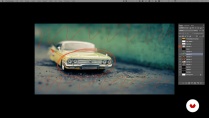
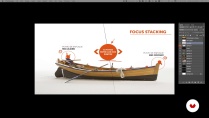
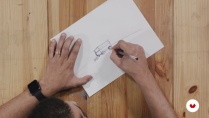
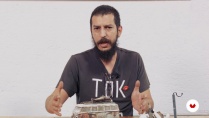
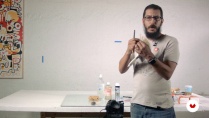
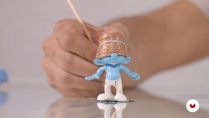





Vraiment un très bon prof, qui prend le temps de bien expliquer les choses et aussi donne pleins d'astuces. Top du top
Estupendo curso, muy bien explicado y muy práctico para maquetistas y coleccionistas de miniaturas.
I have learned a lot of new creative ways. Thank you very much.
El curso me ha encantado, el docente transmite el contenido de una manera clara y dinámica. Para mi todos sus curso son una fuente de inspitación. Es un curso altamente recomendable.
Curso recomendable. Profesor domina la materia tratada